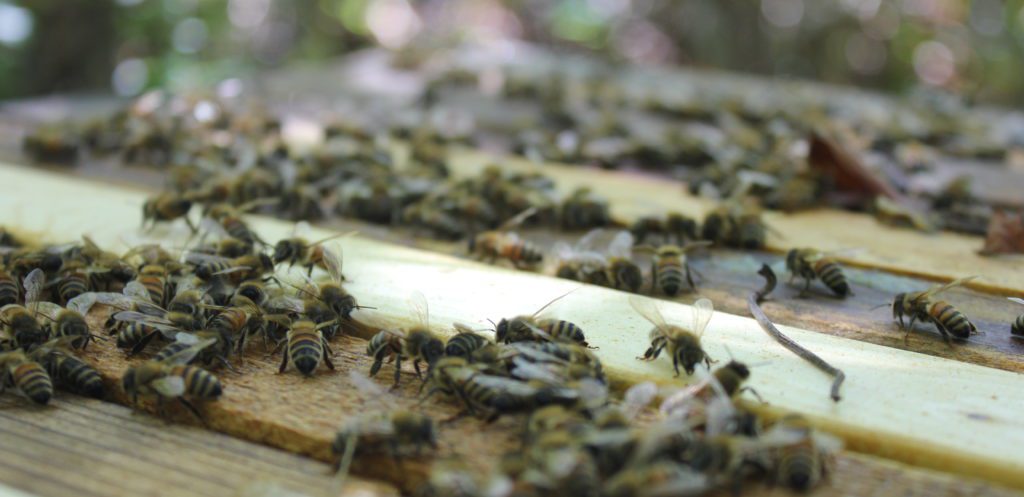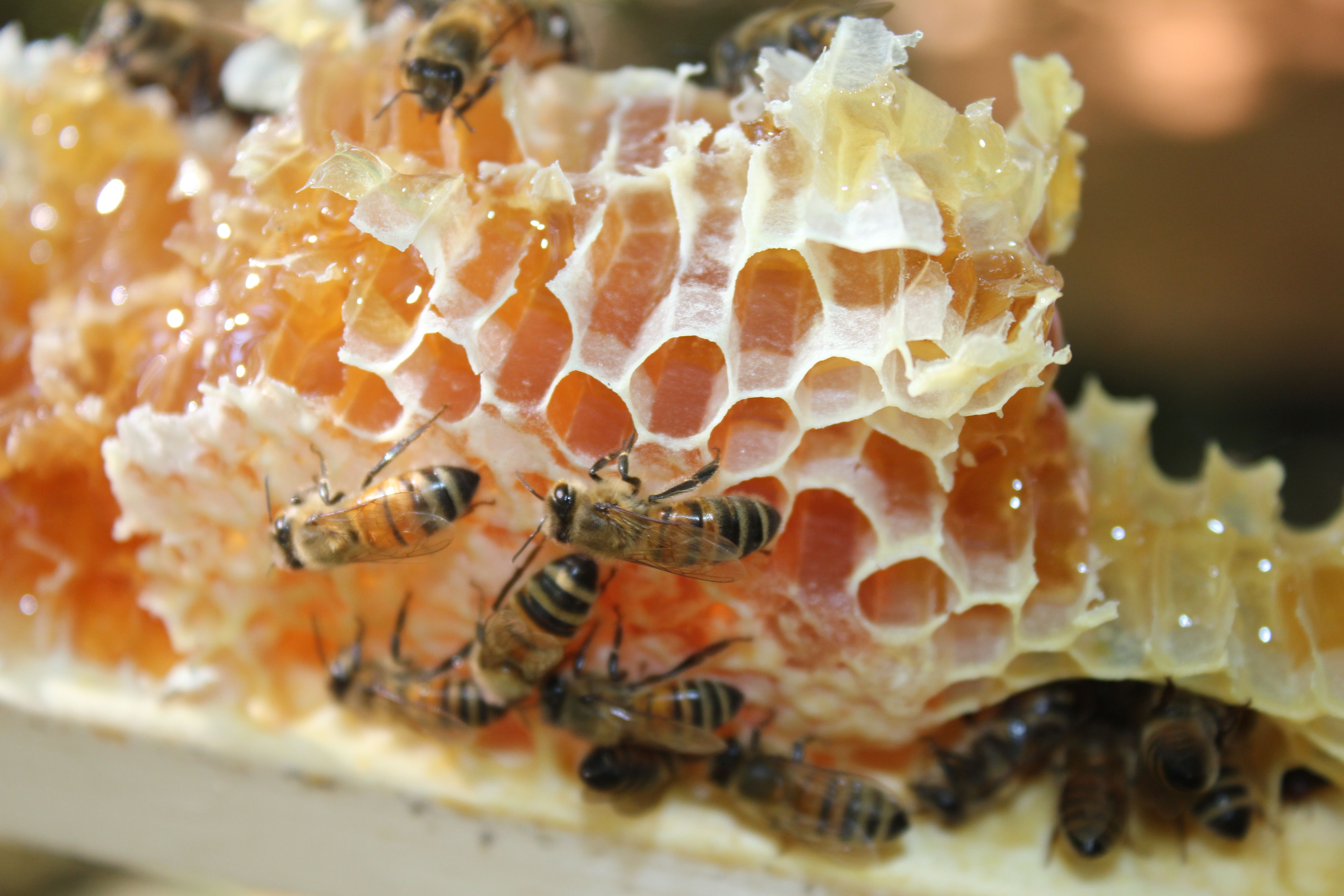Sweet Louisiana honey
The lot behind a medical clinic in bustling Baton Rouge is the last place you’d expect to find a collection of beehives, known as an apiary. But that is exactly where Chris Thayer, member of the Capital Area Beekeepers Association and avid apiarist, or beekeeping enthusiast, keeps about half of his hives: a collection of chest-of-drawers Langstroths, coffin-like top bars, and “Frankensteins” he put together himself. They’re all crawling with bees. And soon, they’ll be dripping with honey.
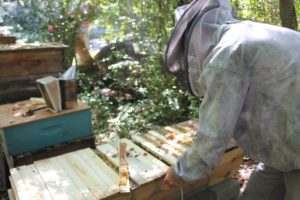
Thayer got into beekeeping not too far away from this shady spot. About three years ago, he removed his first hive from the dormer of the clinic. “Bees kept popping up in the clinic,” he says. He’d watched someone remove a previous infestation of bees here. “Somebody loaned me a veil, and I told myself, I can do this.” He carefully vacuumed the bees into a box and pulled out a baseball-size wax hive. On his way home, he purchased the woodware–the part of the hive the bees live in and make honey–from a local hardware store. A hobby was born.
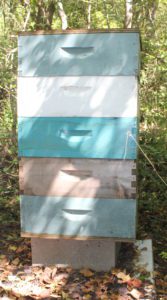
Thayer now has more than 20 hives, with about 10 of them stored behind the clinic. You might think that having his apiary stored so close to a doctor’s office might cause unexpected stings, but Thayer says that simply isn’t the case. “Bees are like people,” he promises. The bees focus on their jobs, collecting nectar from local trees and wildflowers. They won’t bother people unless they are provoked. “Everyone likes guests, but if you have a guest flicking ash on the floor, you’re going to get upset.” And when bees are upset, they emit a furious buzz. “You can hear them go from a nice calm zzz to an angry ZZZ.” That’s when you know you’re about to get stung.
Beneath the exteriors of the woodware, the bees are working to keep the hive alive. Bees have a distinct social order, with a large queen bee at the top tasked with keeping the hive happy, healthy and productive. At the bottom of the hierarchy are the worker bees. These bees make up the majority of the hive, and they are tasked with the all-important role of making honey.
Worker bees will fly up to four miles away searching for pollen from plants and flowers to make honey. They travel from bud to bud sucking out plant nectar, which they store in a second stomach called a honey stomach. Bees will visit as many as 13 plants a minute and collect nectar from as many as 1,000 plants a trip. In addition to the nectar, their spiny legs pick up pollen, which is transferred to other plants, aiding in pollination. When they return to the hive with the nectar, it is mixed with invertase, an enzyme produced by the bees’ mouths, which breaks down the sugar and makes the substance more acidic. If everything goes right, and the bees avoid environmental obstacles like predators and pesticides, they will turn the nectar into that sweet, sticky honey that everyone loves.
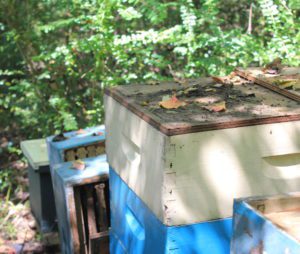
Thayer’s honey, produced right behind the clinic, has long been reserved for friends and family, but he’s on the verge of small-time commercial production. His office is lined with neatly packaged Mason jars of the stuff. “This year I have managed to harvest about 50 gallons of honey from my Langstroth hive group and will harvest some ‘honey-on-the-comb’ from the Top Bar group,” he says. And, thanks to Louisiana’s cottage industry laws, Thayer will be able to sell his locally made honey at farmers markets and produce stands around the area.
He encourages new enthusiasts to not be afraid to experiment, and not to be afraid of the bees. “They’re really docile. Unless you get a mean queen. Then they can be a bit ornery.” While Thayer often uses a veil when checking his hives, he is also brave enough to walk through his apiary in plain clothes. He also says to read. Some books that helped him early in his apiculture days were First Lessons in Be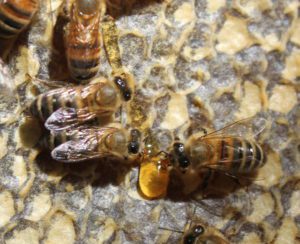 ekeeping by Keith Delaplane and Top-Bar Beekeeping by Les Crowder and Heather Harrell. He credits these books, as well as a little bit of ingenuity and elbow grease, with getting him the results, and honey, that he has today.
ekeeping by Keith Delaplane and Top-Bar Beekeeping by Les Crowder and Heather Harrell. He credits these books, as well as a little bit of ingenuity and elbow grease, with getting him the results, and honey, that he has today.
But beekeeping isn’t just about the honey for Thayer. “I like sharing it with people.” He is active within the association, serving as a mentor and giving lectures on apicultural techniques and the role of bees in pollination. He says that bees have held a lifelong fascination for him. “In second grade, we had someone bring an observation hive to our class… I stayed inside during recess and watched the nest.” Like many other beekeeping enthusiasts, Thayer just finds the hobby enjoyable.
Thayer emphasizes that they’re incredibly important to the local environment because of their role in pollination. “Without bees, we wouldn’t have flowers.” What an awful thought.
The Capital Area Beekeepers Association holds monthly meetings and occasional special events for enthusiasts. Get details as well as beekeeping resources on the organization’s website.
